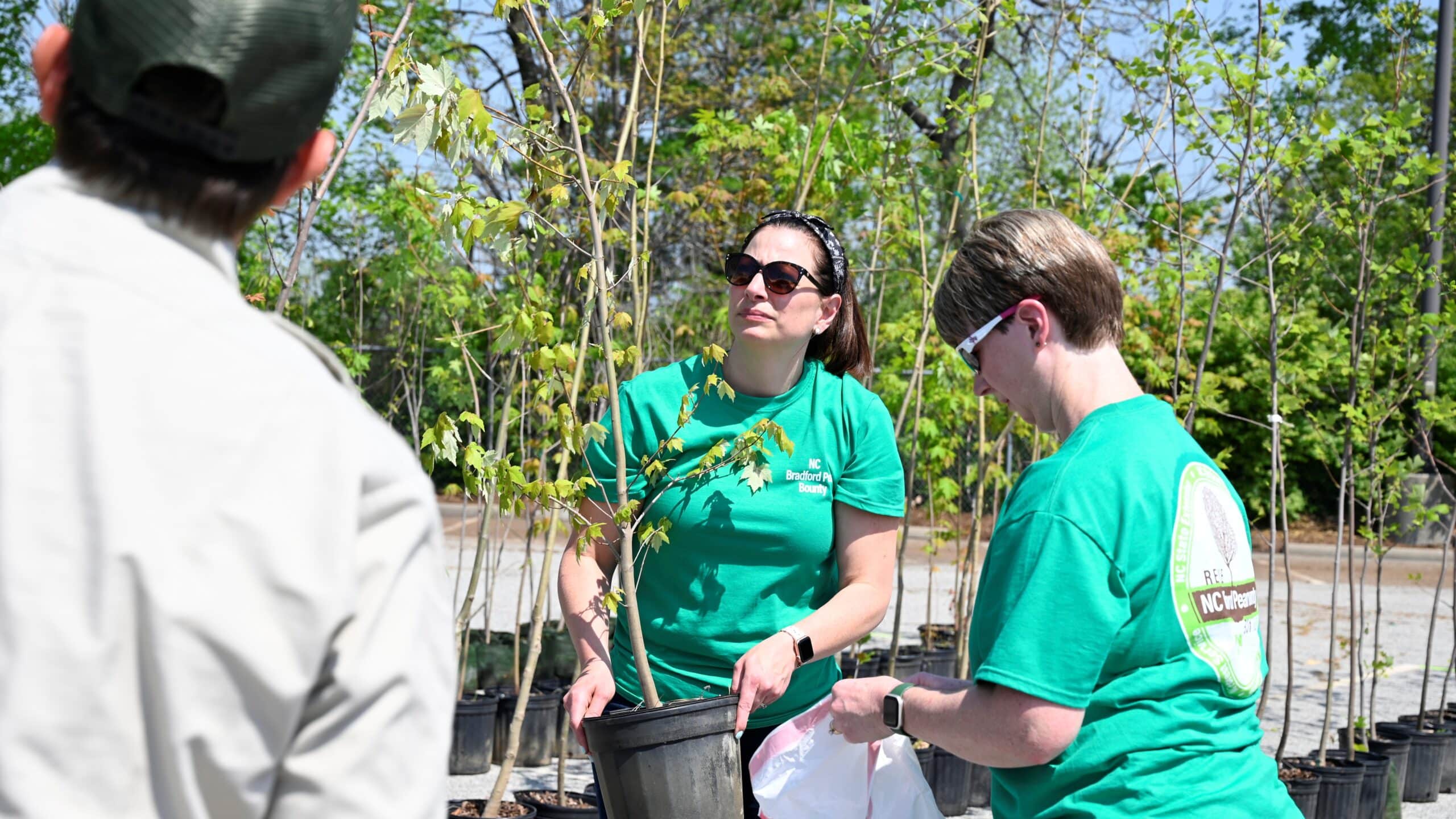‘Bradford Pear Bounty’ Returns to North Carolina

A popular program launched last year to raise awareness about the spread of the Bradford pear trees’ invasive offspring into North Carolina’s natural landscapes is returning in 2023 with four new native tree giveaway events around the state.
The program, known as the “Bradford Pear Bounty,” was launched to raise awareness about the spread of the invasive offspring of the Bradford pear – a type of Pyrus calleryana tree, or the Callery pear – into natural landscapes. In the program, a property owner can receive a free native tree in exchange for cutting down a Bradford pear or other cultivar of the species on their property. NC State Extension launched the effort with the N.C. Wildlife Federation, the N.C. Urban Forest Council and the N.C. Forest Service.
The Abstract spoke to Kelly Oten, assistant professor and Extension specialist of forestry and environmental resources at North Carolina State University, about the program and related plans for the future.
The Abstract: What was the response to the program last year?
Oten: It got people’s attention. The website we set up last year, treebountync.com, had 56,000 views, and we also had traction on social media. At the time we announced the program, we had one event planned in April in Greensboro. In less than 24 hours, we had twice as many people registered to participate as we had trees to give away, so we had to put a pause on registration so we could raise more money. We ultimately had 500 trees to give away, and we had more events in the fall. This year we have four programs, two in the spring and two in the fall: Wake Forest on March 18, Newton on April 22, Sanford on Oct. 28, and Wilmington in the fall. Our goal is to give away 200 to 250 trees at each event.
TA: What kind of reaction have you seen from people to this program?
Oten: People have a lot of strong feelings about the Bradford pear. The vast majority of people seem to hate them – not just because they’re invasive, but also because they smell bad, and make messes during storms. We had a few people who spoke out in support. It is a tree people like because it’s an early bloomer, and is symmetrical, so in those ways, it’s visually pleasing to many.
TA: What are the most popular native trees you’re giving away?
Oten: The two most popular species that people choose are the dogwood and the redbud simply because they are smaller trees, but also because they’re really beautiful in the spring. People are replacing a tree that does have showy spring flowers, so a lot of times they want to replace it with another tree with spring flowers. We talk with each person at the event and make sure they’re getting a tree species that aligns with what they want and the site where they’re planting it.
TA: Are you planning to look at replacement of other invasive species?
Oten: Right now, we’re just focused on the Bradford pear because it’s still so readily available to plant in your front yard. You and I could go to the store today and get one, or you could easily order one online. Also, several states are banning the sale of them, so it’s also kind of a high profile time to target this tree. And we’re seeing it become more and more of a problem. It used to be a tree that we saw in disturbed areas, invading roadsides and empty lots, but now we’re seeing it in forest understories and livestock pastures.
At its core, this is about education. We’re trying to spread awareness about this tree so people will not just replace it in this program, but maybe replace Bradford pear or Callery pear on their own, or choose another tree if they’re selecting a tree to plant in their yard.
Also, we want people to consider looking up plants before putting them their landscapes. When you go to a nursery or a big box store, they typically don’t mark whether a plant is native or non-native or invasive. Not all non-native plants have negative impacts on the environment, but some do. We recommend educating yourself before you put something in the ground.
TA: Has any new research emerged to show the impact of the Callery pear trees on the environment?
Oten: A study by Clemson University researchers came out last year that compared feeding by different insects on the Callery pear trees versus four native species. Compared to native trees, they found lower feeding on the Callery pear in experiments where insects had no other food options available. Insects are the critical link between plants and animals in the food web. When you have Callery pear offspring taking over an area, there are lower insect populations for birds and other animals to feed on.
- Categories:


